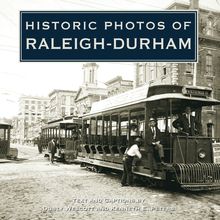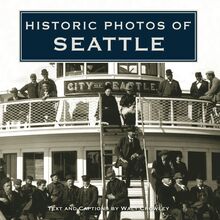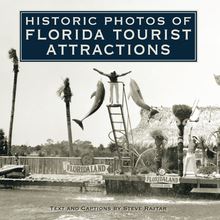Historic Photos of Pittsburgh , livre ebook
183
pages
English
Ebooks
2008
Vous pourrez modifier la taille du texte de cet ouvrage
Obtenez un accès à la bibliothèque pour le consulter en ligne En savoir plus
Découvre YouScribe en t'inscrivant gratuitement
Découvre YouScribe en t'inscrivant gratuitement
183
pages
English
Ebooks
2008
Vous pourrez modifier la taille du texte de cet ouvrage
Obtenez un accès à la bibliothèque pour le consulter en ligne En savoir plus
Publié par
Date de parution
01 avril 2008
Nombre de lectures
0
EAN13
9781618586704
Langue
English
Poids de l'ouvrage
5 Mo
Publié par
Date de parution
01 avril 2008
Nombre de lectures
0
EAN13
9781618586704
Langue
English
Poids de l'ouvrage
5 Mo
HISTORIC PHOTOS OF
PITTSBURGH
T EXT AND C APTIONS BY M IRIAM M EISLIK
Three workers pose on their boat.
HISTORIC PHOTOS OF
PITTSBURGH
Turner Publishing Company
200 4th Avenue North Suite 950
Nashville, Tennessee 37219
(615) 255-2665
www.turnerpublishing.com
Historic Photos of Pittsburgh
Copyright 2008 Turner Publishing Company
All rights reserved.
This book or any part thereof may not be reproduced or transmitted in any form or by any means, electronic or mechanical, including photocopying, recording, or by any information storage and retrieval system, without permission in writing from the publisher.
Library of Congress Control Number: 2006937088
ISBN: 978-1-59652-330-2
Printed in China
09 10 11 12 13 14 15-0 9 8 7 6 5 4 3
C ONTENTS
A CKNOWLEDGMENTS
P REFACE
A G ROWING C ITY (1800 S -1899)
H ILLS C OME D OWN , B UILDINGS G O U P (1900-1919)
M OVING F ORWARD (1920-1929)
H ARD T IMES AND O THER C HALLENGES (1930-1939)
S MOKY C ITY N O M ORE (1940-1949)
E RA OF R ENEWAL (1950-1970 S )
N OTES ON THE P HOTOGRAPHS
Rails are being repaired at the end of the South 22nd Street Bridge approach in 1910.
A CKNOWLEDGMENTS
This volume, Historic Photos of Pittsburgh , is the result of the support of many individuals and departments at the University of Pittsburgh. It is with great appreciation that we acknowledge their valuable contributions and their generous support:
Rush G. Miller, Hillman University Librarian and Director, University Library System, University of Pittsburgh
Michael J. Dabrishus, Assistant University Librarian for Archives and Special Collections
Digital Research Library (DRL), University of Pittsburgh
We would also like to thank the following individuals for their valuable contributions and assistance in making this work possible:
Ronald Baraff, Rivers of Steel
Kate Colligan, Archives Service Center, University of Pittsburgh
Donald Doherty
David Grinnell, Historical Society of Western Pennsylvania
Michael Lee
Ted Tarka, Digital Research Library (DRL), University of Pittsburgh
P REFACE
As I began reviewing photographs to be included in this book, something struck me. No matter what era I was trying to represent, they all seemed to have the same theme. Pittsburgh may be a city of bridges, may be remembered as steel capital of the world, but it is also a city that continues to reinvent itself. These photographs represent a lively, growing city that doesn t fear change.
Nowhere does change really become more apparent than in downtown Pittsburgh. Residents may have started at the Point, but they quickly spread out along George Wood s original street plan and beyond. Even the precursor to the University of Pittsburgh couldn t stay in one place, moving from its original home near the current location of Smithfield Street to Fifth Avenue and Grant Street, across the river to Allegheny City for a brief time, then back to Pittsburgh, and finally settling in Oakland.
Landmark buildings helped the city grow. With the help of prominent architects, H. H. Richardson, Henry Hornbostel, and Frederick Osterling, among others, Pittsburgh acquired the Allegheny County Courthouse and Jail, the City-County Building, and the Henry Clay Frick-financed Union Arcade. Frick also financed the construction of the Frick Building and the William Penn Hotel. By the 1950s, the city was transformed with the clearing of the Point for Point State Park and the Gateway Center office complexes. New buildings weren t limited to downtown. Oakland would see the rise of the Cathedral of Learning, the Mellon Institute, and Heinz Chapel. The North Side would become home to the Allegheny Center Mall consisting of shopping, offices, and residential space.
Of course, nothing makes Pittsburgh what it is more than the people who live here. The images collected here attempt to show the character of the people and their neighborhoods.
This project represents countless hours of research and review. I am most grateful to those mentioned in the acknowledgments of this work, without whom this project could not have been completed. Inspiration was also found in the works of Walter Kidney. He is deeply missed.
- Miriam Meislik
With the exception of cropping images where needed and touching up imperfections that have accrued over time, no other changes have been made. The caliber and clarity of many photographs are limited by the technology of the day and the ability of the photographer at the time they were made.
Images in this volume have been arranged chronologically into six sections of time. In each of these sections we have made an effort to capture various aspects of life through our selection of photographs. People, commerce, industry, recreation, transportation, infrastructure, and religious and educational institutions have been included to provide a broad perspective.
We encourage readers to reflect as they drive or walk the streets of Pittsburgh, enjoy the rivers and parks, and experience the amenities of this bustling metropolitan area. It is the publisher s hope that in utilizing this work, longtime residents will learn something new and that new residents will gain a perspective on where the region has been, so that each can contribute effectively to its future.
- Todd Bottorff, Publisher
Sixth Avenue and Webster Avenue facing Grant Street and the Hotel Larkin downtown. Other businesses of interest include the Pittsburg Hotel Supply Fish Oyster House, the Reliable Lighting Co., the Incandescent Supply Co., and a portent of things to come-window signs indicating that businesses have removed to new locations.
A G ROWING C ITY
(1800 S -1899)
Pittsburgh of the 1800s was trying to maintain itself as the Gateway to the West, 100 years after George Wood had determined the layout of its streets. But the city had grown dramatically from its days as Fort Pitt and was growing beyond its origins at the Point. It started the 1800s with nearly 1,600 residents; it would close the century with a population of more than 230,000. Pittsburgh was reinventing itself as an industrial center with shipbuilding, glass manufacturing, railroads, and, of course, iron works, foundries, and steel at the center of this change.
Education played an equally important role. The Pittsburgh Academy, later known as the University of Pittsburgh, had been established in 1787 in the downtown area and was a significant factor in the city s development throughout the 1800s.
Transportation options also improved greatly during this time. While river transportation was still a vital part of the economy, inland transportation such as railroads for commercial and personal ventures and trolley lines would grow in number and popularity.
The Pittsburgh of this time still seemed rural in some respects. Although several large homes existed in Shadyside, Aspinwall, Castle Shannon, Oakland, and other areas, great expanses of open land remained undeveloped.
Professional and amateur photographers beautifully captured this era. The Pittsburgh Amateur Photographers Society, including prominent members Edith Darlington Ammon and her brother O Hara Darlington, was one such hobbyist group that recorded images of Pittsburgh at this time. Life in Shadyside was captured by Charles Hart Spencer. The work of photographers like these preserved this dramatic period in Pittsburgh s life for contemporary people and the future to enjoy.
As an important shipping port, a leader in coal, coke, and steel production, home to a leading university, and with a continually growing population, Pittsburgh stood well poised to enter the twentieth century.
Members of the Pittsburgh Amateur Photographers Society around 1887 gathered for a group portrait. Among its members were Edith Darlington and O Hara Darlington, as well as prominent Pittsburghers such as Lucien and Marvin Scaife, and Industrialist C. C. Mellor. The youngest member, Charlie Davis, was a mere 12 years old.
Landscape near the Castle Shannon Railroad near Fair Haven, photographed by A. S. Murray around 1886. The Pittsburgh and Castle Shannon Railroad was a narrow-gauge railroad built in 1871 to connect Pittsburgh and Castle Shannon. In 1905, it was leased by Pittsburgh Railways for use by its streetcars.
The Browne House, as it appeared on February 11, 1880. The house was located at 4208 Fifth Avenue near Grant Boulevard, now Bigelow Boulevard, in the Oakland neighborhood on property that was referred to as Frick Acres and owned by Henry Clay Frick. By 1926, construction for the 42-story, Gothic-revival Cathedral of Learning on the University of Pittsburgh campus was under way on the Browne House site.
A Guyasuta train platform, May 30, 1887, as photographed by Edith Dennison Darlington Ammon.
The Swisshelm House, around 1885-1888, as photographed by L. S. Clarke. Though she didn t live here at the time the photograph was taken, Jane Grey Swisshelm once owned this home located in Swissvale near Nine Mile Run. Jane had careers as a journalist, nurse, activist, artist, abolitionist, and mother. She was also responsible for much of the street layout of Swissvale.
Rooftops and gardens of Shadyside taken in 1898 by Charles Hart Spencer.
Mr. John Organ milks a cow on the Spencer family property in Shadyside.
A Pittsburgh, Allegheny and Manchester Traction Company electric streetcar around 1889.
Early Bentley-Knight Centre Conduit System electric cars nos. 2 and 4 of the Federal Street line on Federal Street in Allegheny City. These experimental electric cars were introduced in Pittsburgh beginning in 1888.
The Western University of Pennsylvania football team poses for a group portrait during its founding year, 1889. The team record that year was 0-1. It wouldn t post a winning season until 1892. Not a bad showing-the team didn t have a coach until 1893.
The Junction Hollow Bridge in 1889 as seen from Springbank, the family property of Judge Christopher Magee. Acc














